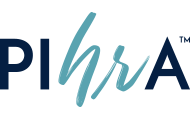|
Business environments provide a number of various ways in which one can learn the proper skills and knowledge necessary to complete tasks assigned to the workforce. This can be done in a number of ways that are on offline, online, or a combination of the two. In this blog post, we will briefly look into what each of these three (3) learning methods mean in a business setting. While reviewing the contents of this article, think about how your business can benefit from using these methods and whether or not the methods that are currently in place are effective or not. But first, we have a bonus to get us going on this important topic. Continue on to see what that may be. Learning Styles & Their Importance in Delivering Training Materials to Employees As an added bonus to begin the article, readers need to have a basic understanding of the various types of learning styles that people within a business may work with best. Extensive research done throughout the last few years have focused on visual, verbal, logical, and physical styles of learning. Visual learners do best when looking at pictures or graphics, whereas verbal learners recite information out loud, or write extensive notes. Logical learners use reasoning to put things in a particular type of order to help them learn concepts and comprehend outcomes. Physical learners have to use their body in some way to obtain knowledge. They are also fairly finicky, too! The three (3) others that aren’t as common are the following styles: aural, social, and solitary. Aural applies sounds and music, which resonates in one’s mind to connect to a specific topic of a learned skill. If they also listen to dialogue or words given to them, they’re more apt to learn something than reading a book or document in silence. Social learners prefer to be on teams and learn with others than by themselves. A direct opposite learning style to wrap this up includes solitary learners, who prefer to self-study and absorb knowledge at their own pace (Diaz, 2018; Santo, 2006; Wantanabe-Crokett, 2018). Before moving on to the heart of the topic, let’s ask ourselves, “why do we have to review these?” The answer transitions us right into the most common ways to deliver training materials. Each of these seven (7) learning styles applies to at least one or more of these ways. So, without further delay, let’s move into the first one, shall we? Offline Learning Also, known as on-the-job (OJT) learning, offline learning experiences can happen in an infinite number of ways. For instance, this can be on the job where a new employee is observing someone completing a task and then is given a chance to do it themselves before being coached (Dalto, 2013). Once feedback is received, the person learning the skill or task often repeats it until it has met a predefined standard or level of acceptance. Offline learning can occur in other ways as well. Just as common as OJT is classroom learning that takes place in a controlled setting. Whether this be a conference room, a classroom, or even a cubicle, this type of learning is done with at least one facilitator and, at a minimum, one ‘student.’ The student is the participant that obtains information from the facilitator in the hope that they learn a task or skill to be more productive for the company he/she is working for or with. Even more to the truth, depending on the culture of the company, this may be THE preferred method to learn (Gorrochategui, 2016). So, which of the learning styles would work best with this type of learning environment? Given that statistics has the classic phrase ‘it depends,’ the same holds true here. But, from what we have learned a moment, ago, it is safe to say that the physical, social, verbal, and visual learners would do best here. Online Learning Reviewing the opposite end of the spectrum is likely to be the most common learning style available to most companies that have at least 100 employees and more than one location. Online learning takes place when training materials presented to learners are done in a format that requires some type of internet connection. Within a business setting, dedicated spaces are provided for employees to complete training modules or courses in order to obtain some type of certification. There are some key differences, though, with offline learning experiences. In rare circumstances, these learning experiences are done with others or within groups. For the most part, this type of learning is done in solitude. Employees usually can only take one course at a time and course lengths can range from a few minutes to half a day or more depending on the topic being learned. When looking at learning styles, individuals who are most comfortable with learning at their own pace, logical learners, and even some aural learners would do best in this type of learning environment. By far, one of the biggest challenges with this type of learning is to make it interesting and impactful. However, that is another blog topic that we’ll look at in the future (DAĞ & Geçer (2009); Erin, 2016). Hybrid Learning Experiences The third and final way to conduct training in a business setting is naturally combining the two (2) aforementioned methods together; also known as blended learning. This approach combines learning experiences that are done in-person, as well as in an online format. As McGraw Hill Education mentioned on their blog, blended (or hybrid learning) is “A mix of technology and face-to-face instruction.” It combines brick-and-mortar classroom learning with online learning, and students have some control over the time, pace, and place of their learning (2018). Common to industries such as food service, retail, and warehousing, these experiences provide learners with the opportunity to develop skills both on the job and away from it. Comparatively speaking, naturally, all seven (7) of these learning styles could benefit from the strategy. However, training programs should be tailored to the employee-base in terms of a more audio/visually-heavy program, or a more self-paced learning program instead. Conclusion In summary, the learning styles mentioned at the beginning of this article are the base of determining what the best training method would be for the employee population it will intend to serve. Naturally, there are many other variables to choose from, which can spur numerous posts just off the topics provided here. For now, however, we looked at the three (3) most common ways to deliver training in a workplace setting. Offline training courses are done with someone else, whereas online learning is intended to be interactive, but usually with the person at the keyboard. Hybrid learning experiences are a combination of the two, and are best suited to maximize benefits to all concerned. Let it be said, however, that one method may work for one firm, whereas it would be a complete bust for another. Here at Integrity MCG, we can assist in determining the best route to go for creating effective, affordable, and impactful training programs for your firm and many others. Before losing your mind, give us a try! References
1 Comment
12/18/2018 07:08:35 pm
Hey Dr. Danielle...great blog post! I think you're correct in saying that businesses now have so much more training available these days with the online component, but that learning has to be tailored to include the methods (offline, online, or hybrid) that resonate with a particular population. Online learning requires real discipline and commitment, which some people may not have the patience for, and the hybrid model may solve that problem. And companies really have to determine which learning styles their employees respond to before instilling learning programs. Anyway, I really enjoyed the post!
Reply
Leave a Reply. |
AuthorDr. Danielle Jenkins provides insights and tips on how to strategically run your business in the most efficient manner possible. Archives
June 2019
Categories
All
|
Proudly partnered in the community with the following organizations
|














